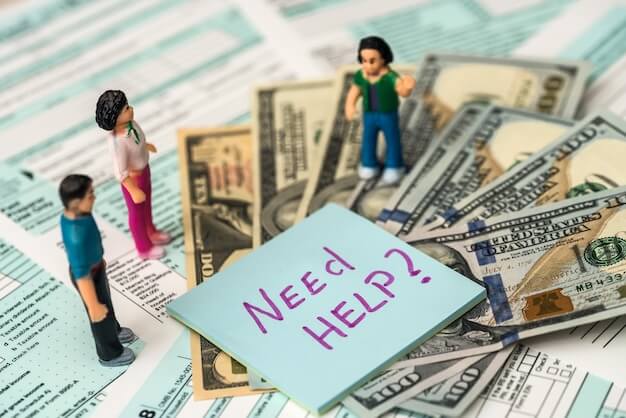Payday Loans VS Short Term Loans: A Young Aussie’s Perspective

Welcome to the world of financial decision making. Today, we’re going to discuss an interesting topic: Payday Loans vs Short Term Loans. And believe it or not, we’re tackling this head-on from the perspective of a tenth-grade student. Armed with the credible financial knowledge from MiFinance, let’s uncover the mysteries behind these financial terms.
Table of Contents
So, What’s The Deal?
When people talk about financial terms, it often sounds like they’re speaking a different language. I mean, we’re just trying to save up for the latest Xbox game, right? But guess what, understanding the basics, like payday loans and short-term loans, can come in handy, even for us youngsters.
First things first, payday loans are a type of short-term loan themselves. According to the Australian Securities and Investments Commission, they’re small loans you can use when you are temporarily out of money. We’re talking about small amounts, typically between $100 and $2,000. The catch is, they usually have high fees and must be repaid in a short time, like your next payday (hence the name).
On the other hand, short-term loans, as the name suggests, are loans that are supposed to be paid back in a short time, typically a year or less. They might be for larger amounts than payday loans, and they may have lower fees. Short-term loans are offered by lenders like MiFinance, and can often be a more flexible and reliable option.
The Good, The Bad, and The Ugly
Just like any financial decision, payday loans and short-term loans both have their ups and downs. The good part about payday loans? They’re quick and easy to get. The bad? The high fees. As for the ugly, well, let’s just say it can get messy if you can’t pay them back in time.
Short-term loans, on the other hand, are often a bit more regulated, meaning they can have lower fees. Plus, they’re typically more flexible in repayment options. But remember, any type of borrowing comes with responsibilities.
Making The Right Choice
So, how do you decide between a payday loan and a short-term loan? The answer is… it depends on your situation. Here’s a checklist to help:
Understand your needs: How much money do you need? And when can you pay it back?
Research: Always do your homework. Check the fees, interest rates, and terms.
Consider alternatives: Is there another way to get the money you need? Maybe a part-time job or selling some stuff you don’t need anymore?
But always remember, if you’re under 18, you’ll need a parent or guardian’s help to take out a loan. It’s a good idea to have a chat with them about your financial needs.
Digging Deeper: Payday Loans
Let’s delve a little deeper into payday loans. Picture this scenario: You’re saving up for a new bike or a fancy gadget, but you’re a little short on cash. So, you consider taking a payday loan. Remember, they’re small, high-fee loans designed to be paid back by your next payday.
In Australia, the law states that payday loans cannot exceed 20% of your income. That means if you earn $500 a week, the most you can borrow is $100. The fees can be steep though. On top of the 20% establishment fee, there’s a monthly fee of 4%. So if you borrow $100, you could end up paying back $124!
Despite the costs, the appeal of payday loans is their speed and accessibility. Often, you can get the money within 24 hours. But let’s not forget, these loans are a short-term fix. They can’t replace good saving habits or a solid budgeting plan.
For more info about payday loans, check out the MoneySmart website. It’s run by the Australian Securities and Investments Commission and has heaps of helpful advice.
Digging Deeper: Short Term Loans
On the other side of the coin, we’ve got short-term loans. While these also need to be repaid quickly, they offer a bit more flexibility than payday loans.
Let’s say you’re planning a big school project, and you need some extra funds. A short-term loan might be a better fit. Why? Because they’re often for larger amounts and can be repaid over a longer period. You could borrow several thousand dollars and pay it back over several months.
Another advantage of short-term loans is the range of lenders. While urgent payday loans are typically offered by payday lenders, short-term loans can be provided by banks, credit unions, or online lenders like MiFinance.
But before you jump in, always compare your options. Look at the interest rates, fees, and terms of different lenders. And if you’re under 18, you’ll need a parent or guardian to take out a loan for you.
When To Consider a Loan?
Knowing when to consider a loan is a vital skill. Sure, if you need cash quickly, a payday loan might be the easiest option. But remember, easy doesn’t always mean best. With high fees and short repayment times, payday loans can sometimes cause more problems than they solve.
On the other hand, if you’re looking at a larger expense, like a school trip or project, a short-term loan might be more suitable. They usually have lower fees and longer repayment periods, giving you a bit more breathing space.
Of course, loans aren’t the only option. Saving up, budgeting, or finding other ways to earn money (like a part-time job) can often be the best solution.
And always remember to talk about these decisions with an adult you trust. They can provide guidance and advice based on their experiences.
Understanding Interest Rates and Fees
One of the most critical parts of any loan is understanding the interest rates and fees.
Interest is the cost of borrowing money. It’s usually a percentage of the amount you borrow, and it’s how lenders make money. Payday loans often have high interest rates because they’re short-term and high-risk for the lender.
Fees are another important aspect to consider. These might include application fees, service fees, or late payment fees. Always make sure you understand all the potential costs before you take out a loan.
So, there you have it! We’ve taken a journey through the world of payday loans and short-term loans. These are just the basics, though. As you grow up, you’ll learn more about the complexities of finance. But remember, the best financial decisions are always informed ones. Take your time, do your research, and don’t be afraid to ask for help.
The Bottom Line
Just like understanding a new video game, getting a grip on financial terms like payday loans and short-term loans can seem tough at first. But with a little research, you can make the right choices for your needs. Remember, always do your homework and chat with trusted adults about your financial decisions. Contact us to know more!
FAQs
Are payday loans and short-term loans the same?
No, they’re not. Payday loans are a type of short-term loan. They’re typically for small amounts and must be paid back quickly, often by your next payday.
Can a tenth-grade student get a payday loan or short-term loan?
Under Australian law, you have to be 18 to get a loan. So, if you’re in tenth grade and under 18, you’ll need a parent or guardian’s help.
Where can I get more information about payday loans and short-term loans?
Check out the Australian Securities and Investments Commission website for information on payday loans and MiFinance’s website for details on short-term loans.
What happens if I can’t pay back my loan on time?
If you’re unable to repay your loan on time, it’s essential to contact your lender as soon as possible. They can discuss your options with you. Remember, not repaying a loan can lead to additional fees and even damage your credit score.

